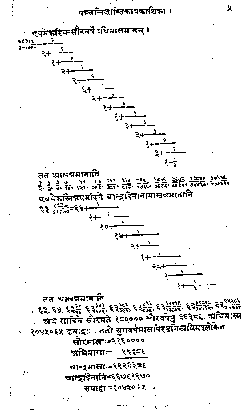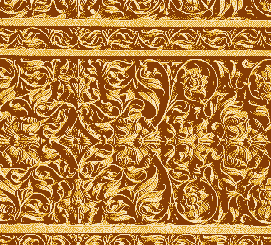|
Ancient India's Contribution to
Mathematics
"India was the motherland of our race and Sanskrit the mother of Europe's languages. India was the mother of our philosophy, of much of our mathematics, of the ideals embodied in Christianity... of self-government and democracy. In many ways, Mother India is the mother of us all."
- Will Durant
- American Historian 1885-1981
 Mathematics represents a high level of abstraction attained by the human mind. In India, mathematics has its roots in Vedic literature which is nearly 4000 years old. Between 1000 B.C. and 1000 A.D. various treatises on mathematics were authored by Indian mathematicians in which were set forth for the first time, the concept of zero, the techniques of algebra and algorithm, square root and cube root.
Mathematics represents a high level of abstraction attained by the human mind. In India, mathematics has its roots in Vedic literature which is nearly 4000 years old. Between 1000 B.C. and 1000 A.D. various treatises on mathematics were authored by Indian mathematicians in which were set forth for the first time, the concept of zero, the techniques of algebra and algorithm, square root and cube root.
This method of graduated calculation was documented in the Pancha-Siddhantika (Five Principles) in the 5th Century But the technique is said to be dating from Vedic times circa 2000 B.C.
As in the applied sciences like production technology, architecture and shipbilding, Indians in ancient times also made advances in abstract sciences like Mathematics and Astronomy. It has now been generally accepted that the technique of algebra and the concept of zero originated in India.
 But it would be surprising for us to know that even the rudiments of Geometry, called Rekha-Ganita in ancient India, were formulated and applied in the drafting of Mandalas for architectural purposes. They were also displayed in the geometric patterns used in many temple motifs.
But it would be surprising for us to know that even the rudiments of Geometry, called Rekha-Ganita in ancient India, were formulated and applied in the drafting of Mandalas for architectural purposes. They were also displayed in the geometric patterns used in many temple motifs.
Many motifs in Hindu temples and Palaces display a mix of floral and Geometric patterns.
Even the technique of calculation, called algorithm, which is today widely used in designing soft ware programs (instructions) for computers was also derived from Indian mathematics. In this chapter we shall examine the advances made by Indian mathematicians in ancient times.
Author : Shri Sudheer Birodkar
|